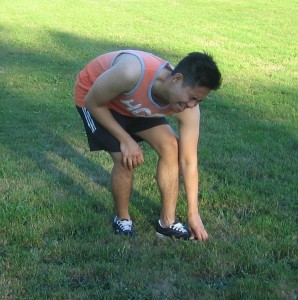A nail puncture wound is caused by any sharp object such as a nail that penetrates the skin layers and leaves a piercing in the skin. Remember that these wounds are susceptible to infection since bacteria might be driven deep into the skin and hard to thoroughly clean.
The injury can be minor or severe depending on the body part affected, depth of the puncture and condition of the nail. An issue of concern with a nail puncture wound is tetanus which is an infection of the nervous system. The injury should be treatment in a medical facility to prevent infection and any wound complications.
Cleansing
Flushing or irrigating a puncture wound helps get rid of any debris or dirt left within the puncture. The wound can drive bacteria and debris deep into the skin tissues, thus increasing the risk for infection.

It is recommended to irrigate a puncture wound with a steady stream of water for at least 5 minutes to flush out any contaminants. Warm, soapy water can be utilized after irrigation to further cleanse the wound. Any debris that can be seen and not removed with irrigation must be taken out under a sterile condition in a healthcare facility.
Antibiotics
Antibiotics might be used to prevent infection from a nail puncture wound, especially if the nail that caused the wound was rusty or dirty. Apply a topical antibiotic cream on a puncture wound once it has been cleansed to prevent infection.
The puncture wounds are not often sealed with sutures due to the risk for infection and should be monitored for any indications of infection. The wounds that are slow to heal that become swollen, reddened or sore to the touch or drain pus or foul-smelling fluid should be treated in a healthcare facility.
Bandaging
When a puncture wound has been washed, a simple dressing should be applied to keep the wound clean and dry as well as absorb any drainage. A sterile gauze or a non-adhesive pad can be utilized to protect a puncture wound that can be secured using a hypoallergenic or medical tape. The dressings must be changed every day or once it becomes stained until the wound has recuperated.
Disclaimer / More Information
The information posted on this page on a nail puncture wound is for learning and educational purposes only. To learn to care for this type of wound, register for first aid training at one of our training centers located throughout Canada. The training centers are in Edmonton, Calgary, Vancouver, Kelowna, Saskatoon, Victoria, Surrey, Mississauga, Winnipeg, Red Deer, Toronto, Ottawa and Halifax.
